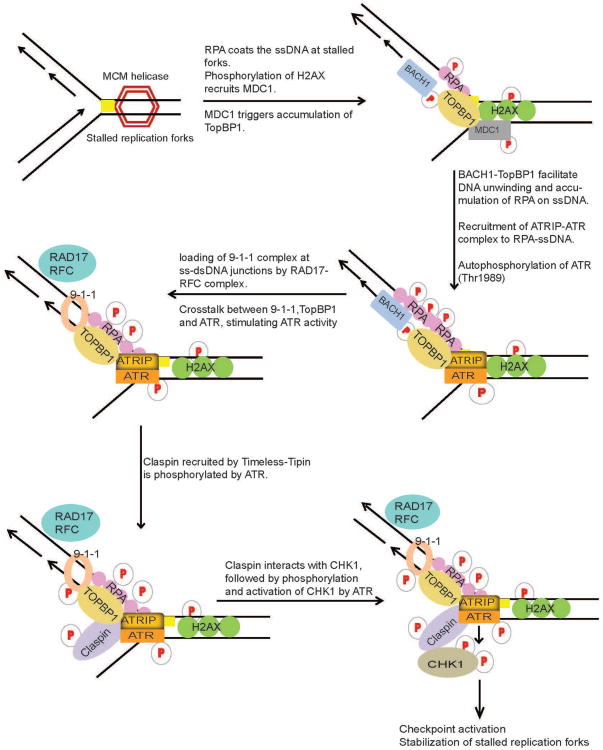Figure 2.
DNA damage signaling at replication forks. During DNA replication, lesions (yellow square) in the DNA template block the progression of DNA polymerases and result in the stalling and uncoupling of replicative polymerases with helicase activities of the replication machinery at the lesion site, generating tracts of single-strand DNA (ssDNA) due to continuous unwinding of DNA by helicases. ssDNA is subsequently bound by RPA. RPA-ssDNA then serves to signal the recruitment of ATR through its interacting partner, ATRIP, where it phosphorylates and activates Chk1. ATR-Chk1 activation requires intricate crosstalk between TopBP1, BACH1, 9-1-1 complex, Timeless, Tipin and Claspin mediator proteins at the replication forks. ATR-Chk1 pathway serves to activate cell cycle checkpoint and DNA repair machinery to repair the DNA lesion

